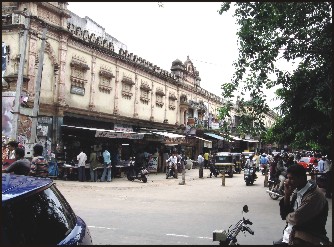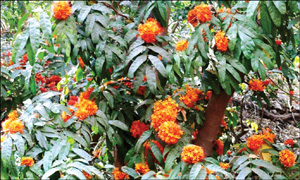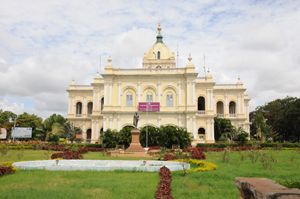
As CounterCulture shuts down, founders Guru Somayaji and Vishwaraj Mohan recap their favourite shows in no particular rank
Whitefield venue CounterCulture underwent a management change last month, hosting its last show as a major music venue on May 30. While it would have been difficult for any live venue to survive while meeting the city’s demand for local and out-of-town bands, CounterCulture had the biggest space to offer bands and gig organisers – perfect for festivals like Bangalore Open Air and album launch concerts by bands ranging from Swarathma to Skyharbor since 2011.
We spoke to CounterCulture founders Guru Somayaji and Vishwaraj Mohan, who are now moving on to managing music programming and events at other venues, to recap their favourite shows in no particular rank.
Somayaji says, “At CounterCulture, pretty much every gig I have put on has been a favourite. As a programme director, there are pressures of choosing the right artiste for a night, but in the last few years, given the feedback and response, I guess, I have done some gigs right!”
The Bicycle Days and Tempo Tantrick(February 2011): This was CounterCulture’s first gig. None of us had a clue when we set up this gig that we would go on to host and produce some crazy gigs!
Peter Cat Recording Co. and Gowri (April 2011): This is the first time I got a call from this band saying they were driving down to Bangalore from New Delhi and were looking for a gig. It was also the first time we were hosting an artiste away from Bangalore. The magic of this gig and the music still remains fresh to a lot of people.
Pinknoise – Indie March Festival (March 2013): I think this was the first proper gig the band played after (bassist) Gyan Singh’s passing away. As a tribute to Gyan, we placed a Bass Amplifier right at the front of the stage and his recorded tracks were playing through it.
The intensity of the music and the love for him was felt through the gig. This to me was musically the most powerful gig!
Vedanth and Bindu – Indie March Festival (March 2013): For a brief while, we experimented with hosting classical music gigs. I still don’t know how this gig went on for two hours and 58 minutes non-stop, and the crowds refused to move. I never thought a combination of Kabir, Hindustani and Carnatic can have someone gripped for as long as this.
Parvaaz – Behosh Album Launch (July 2012): I first saw Parvaaz at The Big Mushroom Cloud Festival and didn’t like them at all. So when they landed up at CounterCulture to meet me to discuss their album launch, I approached it with some amount of cynicism. At around their album launch, I went on a motor-biking trip across South India. On the morning of the gig, I decided to brave incessant rains and walked into the venue soaking wet, and my, what a transformation the band had gone through since I first saw them in 2009.
Parvaaz – Baran Album Launch (September 2014): After the Behosh album launch, we kind of became friends with the band and when the time for their second album launch happened, I decided to make this an album launch to remember. I sat through their rehearsals, plenty of meetings, designing lighting spots, and a fully setup dress rehearsal. We never even expected to see that many people in one place singing out all their songs. It was possibly one of the best album launches.
The Bicycle Days – Calamitunes Album Launch – (July 2013): This was conceptually one of the craziest gigs I designed. For the first time, there was a band agreeing to my method of madness. I covered the entire stage with a screen made of “dizzy lizzy” cloth, the fabric that is used to stitch blouse and petticoat lining.
The band was lit up from behind and all the audience could see were silhouettes of musicians and that’s it. The focus was on forcing people to listen through the music as opposed to watching a band. As a lighting designer, this was quite a gig!
source: http://www.thehindu.com / The Hindu / Home> Features> MetroPlus / by Anurag Tagat / June 24th, 2015








